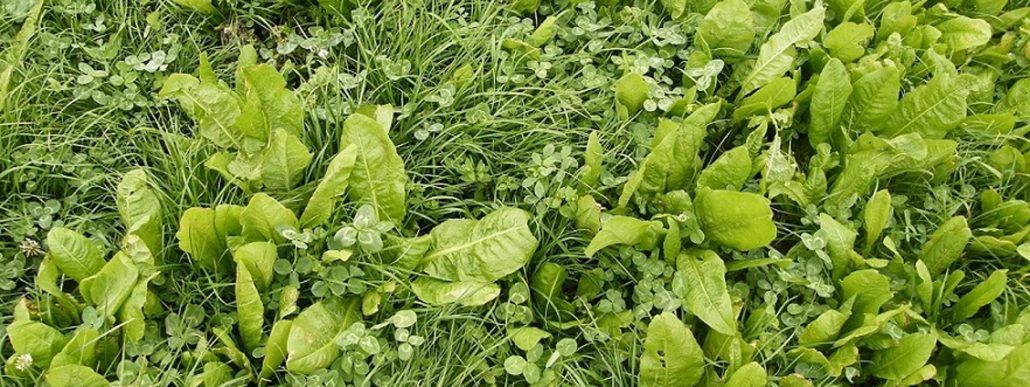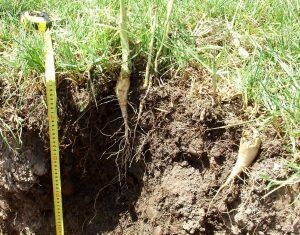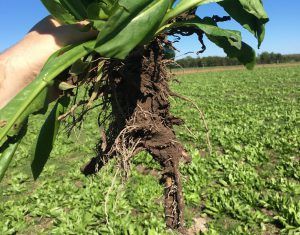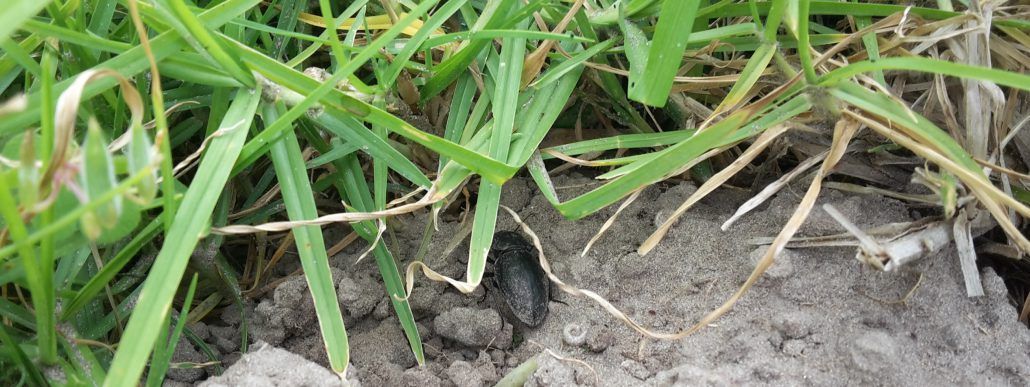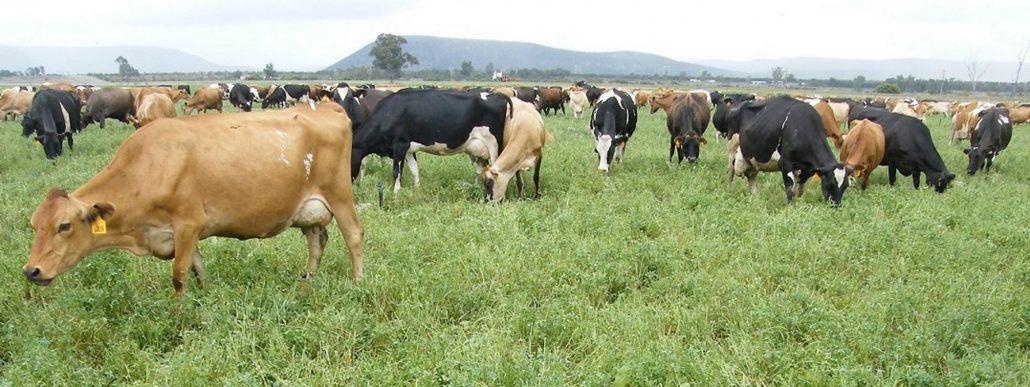Multi-species pastures have become a prominent topic over the last few years. Why does everyone make such a big deal about it? And how is it supposed to benefit your pastures, soil and cows when seeds and planting cost so much money? These are the questions I will explore in this blog.
The planting of multiple species in pastures has many benefits. The most prominent benefits are that diversity above ground results in diversity below ground, diverse plants help to build organic matter, legumes add nitrogen to the soil, a diversity of plants helps to reduce pests and diversity results in resilience. I will break down the benefits of each of these aspects below.
Diversity above ground results in diversity below ground
The same diversity we see above the surface of the soil from various plants (e.g. ryegrass, kikuyu, chicory, clover, lucerne) is the diversity that occurs below the soil. Different plants release different forms of sugars and proteins, therefore this diversity of roots feeds a diversity of organisms. The more diverse the area around the roots is, called the rhizosphere, the more diverse the microbial community in the rhizosphere will be. Microorganisms provide many benefits in the soil and to pasture growth, such as facilitating the natural cycling of nutrients, more productive mineralisation processes, improved water holding capacity, improved nutrient holding capacity and better soil structure. A healthy soil food web requires a full complement of organisms throughout the web, which is why a diversity of organisms is so important.
Diverse plants help to build organic matter
The most effective way to build organic matter in the soil is through root growth. As roots grow, they fill the soil profile. The action of cattle (or other livestock) grazing the pasture then causes some of the roots to die off. This, along with the proteins and sugars that roots secrete, become food for microorganisms. Microorganisms break this organic matter down, releasing nutrients to the soil to be made available to plants, and forming more stable forms of carbon (such as humus) which become part of the soil. Diverse plants contribute to this process by ensuring that a greater proportion of the soil profile is filled with roots. Different plants have different root structures and therefore occupy different areas of the soil profile. The more diverse the pasture is, the greater amount of space in the soil will be occupied by roots, and the more organic matter will be built in the soil.
Increased organic matter in the soil is directly linked to better structure and greater water- and nutrient-holding capacity. This is due to an increased diverse microbial population which assists in the formation of stable soil aggregates. An example of this process is bacteria feeding on root excretions along with the soil surrounding the root and in the process forming small soil aggregates. The fungi ‘glues’ these small aggregates together to form large stable aggregates. Diverse plants therefore help to contribute to improving the structure of the soil. Improved soil structure is also helped by certain root types being able to break through compacted soils (e.g. chicory), where other pasture species cannot (e.g. ryegrass).
Legumes add nitrogen to the soil
Leguminous plants (e.g. clover, lucerne and vetch) contain nitrogen-fixing bacteria in nodules on their roots. These nitrogen-fixing bacteria convert atmospheric nitrogen into ammonia, which is then converted into ammonium. This is a form of nitrogen that plants are able to use. The planting of legumes in pastures helps to make nitrogen available as and when it is required by the pasture plants. This results in less reliance on nitrogen fertiliser, which is costly.
A diversity of plants helps to reduce pests
Monoculture pastures are vulnerable to pests and diseases. They create a perfect breeding ground for pests. Any pest or disease which targets the particular species will cause significant, if not complete damage to the pasture. With multiple plant species in a pasture, there is less chance of a pest being able to thrive because it is not a completely beneficial habitat. A diversity of plant species also results in a diversity of habitats for beneficial, protective insects and microorganisms. These keep pests away from the pasture and soils. Some pasture species have natural insecticide properties, such as brassicas (e.g. mustard and turnip), that can act as natural soil fumigants.
Diversity results in resilience
Any farmer will understand the importance of agricultural systems being resilient. Climate is not always predictable, weather patterns have become more random and extreme weather events more pronounced. This means farmers have to be able to adapt to these challenging circumstances. Different plant species thrive and respond to different conditions, and therefore having diverse plants creates a more resilient pasture, which can respond positively to a greater variety of conditions. There is greater flexibility of the pasture system. As an example, chicory is better at growing after stress from a lack of water, than what ryegrass is. A pasture with chicory will then respond quicker to water becoming available after a dry period than a pure ryegrass pasture.
Diverse pastures also contribute to soil health, as discussed above, and healthy soil will support production using lower external inputs. This will help farmers to become less reliant on expensive inputs such as fertiliser. The nutritional value of diverse pastures is often greater than a monoculture pasture. Higher carbon levels in the soil also contribute to greater resilience, as the higher the organic matter in a soil the quicker it will recover after disturbances. All of this helps to increase the resilience of the farm and reduce risk, especially in the medium and long term.
Conclusion
There are numerous benefits of planting multiple plant species in pastures. A few of these benefits have been explored, although this should not be seen as an exhaustive article. There are many more benefits. The practical aspect of planting multiple species will be relative to the climate and soil of the farm. Some plant species that work well in pastures, along with the typical grasses and clovers, are radish (large tubers which hold moisture and add organic matter to the soil), turnips (have large roots which add organic matter, are tolerant of grazing and soil organisms are attracted to them – soil organisms like being around brassicas), forage rape (large root mass to build organic matter, is nutritious for grazing and is also a brassica), white or black mustard (it is a brassica and is great for restoring soils) and chicory (nutritious grazing and adds organic matter to the soil). These species should not be planted too densely though, as they have large leaves and create a shading effect if they are too dense.
How have you experienced the planting of multispecies pastures? Do you have any ideas that you can share with other farmers when planting multiple species?
- A carbon footprint assessment for pasture-based dairy farming systems in South Africa - 2024-02-07
- What progress have farms participating with Trace & Save made over the past 10 years? - 2023-09-06
- Carbon footprint reduction over time: Lessons from pasture-based dairy farms in South Africa - 2023-09-04

